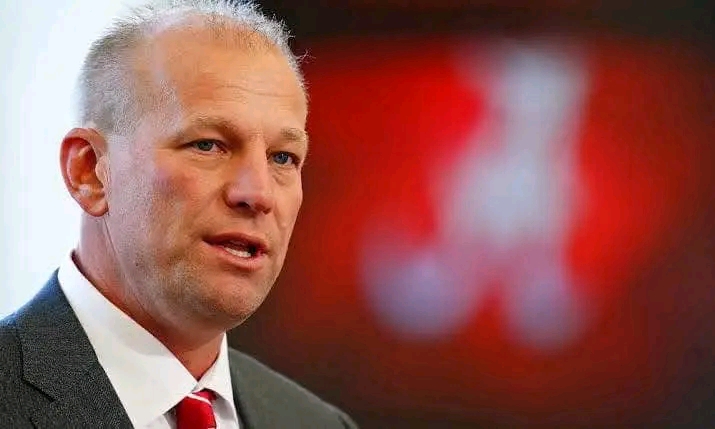Title: Crimson Fairways: A Coach’s Presidents Cup Journey
They said it couldn’t happen. Heck, I said it couldn’t happen.
Me—a football coach, born and bred on red clay fields and fourth-quarter grit—swinging a driver alongside the world’s greatest golfers at the Presidents Cup? It sounded like a headline from The Onion. But there it was, sitting in bold serif at the top of my inbox:
“Official Invitation: Presidents Cup Honorary Captain’s Circle – Welcome, Coach.”
I sat back in my office chair, the one with the cracked leather armrest from too many late nights reviewing tape. Bryant-Denny Stadium hummed quietly outside, the fall air ripe with promise. It was the middle of October—prime SEC season—but my mind was already on tee boxes and fairway lies.
Let me back up.
My name is Thomas “TJ” Walker. I’m the head coach of the Alabama Crimson Tide football program and, for reasons still slightly mysterious even to me, a damn good amateur golfer. Golf started as a hobby. You know, a way to blow off steam during the offseason, get out with the staff, and beat the coordinators over 18 holes at Shoal Creek. But over the years, it turned into something more. Therapy. Focus. Even obsession.
Somewhere along the line, my swing caught attention. Not just in the SEC country club circuit, but beyond. Word got around I had a scratch handicap. Then I got invited to a few celebrity pro-ams. Made a birdie putt in front of Phil Mickelson once. That clip made ESPN’s “Top Plays.” Then came the Golf Digest feature: “Gridiron Genius with a 6-Iron.”
Fast forward to last spring. I’m coaching spring ball, working on a new RPO scheme with my QB, when I get a call from none other than Davis Love III. Thought it was a prank. He said, “Coach Walker, the Presidents Cup committee wants to recognize the growing bridge between elite athletics and the game of golf. We’d like to invite you as an honorary captain.”
I said, “For real?”
He said, “Dead serious. Bring your clubs.”
The Presidents Cup. International prestige. Team USA vs. the world. And now, a Southern football coach thrown into the mix with tour pros, major winners, and iconic captains. It felt surreal.
By the time the tournament rolled around, I’d gotten custom-fitted clubs with crimson grips and a Titleist bag embroidered with the Alabama ‘A.’ My assistants joked that I spent more time on the putting green than in the film room. But make no mistake—we were 7–0 heading into November. The team was rolling, and now their coach was rolling too—onto the world’s golfing stage.
I arrived at the course—Royal Melbourne—jet-lagged but wide-eyed. It was early morning, and the sun was rising like a soft orange brushstroke over the links. I wore a navy blazer, khakis, and a crisp crimson tie. At the opening ceremony, the American team gave me a standing ovation. Jordan Spieth fist-bumped me. Scottie Scheffler asked about our last game against Georgia.
“I watched it during my flight,” he said. “That 4th and 2 call? Gutsy.”
I grinned. “Just trusting my players.”
Over the next few days, I walked inside the ropes with the American squad. I wasn’t swinging clubs competitively, but I read putts, gave pre-round speeches, and even helped rally the team after a tough first-day deficit.
Funny thing—coaching is coaching. Whether it’s a linebacker or a left-handed golfer, the key is connection. Motivation. Vision.
One afternoon, I found myself walking beside Xander Schauffele on the 16th hole.
“You ever coach golfers?” he asked.
“Only on Saturdays when the kicker slices his warmup,” I said. “But I’d call your game disciplined, patient. You play like a point guard—always looking two shots ahead.”
He smiled. “You sound like you’ve been out here before.”
In a way, I had. Not on this course. But in the heat of battle. In the silent moments before a big play. I understood pressure, expectation, and the burden of legacy.
On the final day, Team USA was tied going into singles. The air was electric. I gave a speech in the locker room—one I hadn’t prepared, just spoke from the heart.
“Gentlemen,” I said, “I coach a team of 18 to 22-year-olds who fight every Saturday for something bigger than themselves. Y’all have that same chance today. Play for your families, your fans, your flag. Play free. Play fearless. And remember—every great story has a comeback.”
That day, the Americans stormed back. I walked the last hole with Patrick Cantlay as he sealed the Cup. As the gallery roared, he turned to me and said, “Coach, I’ve heard a lot of speeches. That one hit different.”
Later, they handed me a commemorative Presidents Cup medal. I held it up for a photo, grinning like I’d just won the Iron Bowl. Reporters surrounded me, asking how it felt.
“Unexpected,” I said. “But unforgettable.”
When I got back to Tuscaloosa, my players surprised me in the locker room with a putting green, complete with the Presidents Cup logo at the center. They all wore golf polos with my face embroidered on the chest.
We laughed. I teed up a putt, drained it, and said, “That one was for Team USA.”
It’s funny—my whole life, I chased championships on the gridiron. But this experience? It reminded me that greatness doesn’t have to come with a scoreboard. Sometimes it walks in wearing spikes and a soft-spoken confidence.
Now, when I hit the course back home, folks look at me a little different. “That’s Coach Walker,” they whisper. “First NCAA coach ever to make the Presidents Cup.”
And I just tip my cap, line up the next shot, and smile.
After all, legends don’t stay in one arena—they expand the whole playing field.
Want a version with a more comedic or dramatic tone? I can spin it however you like.
